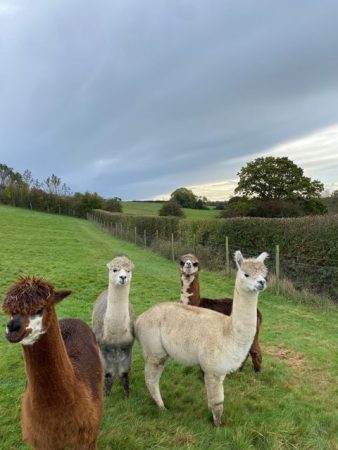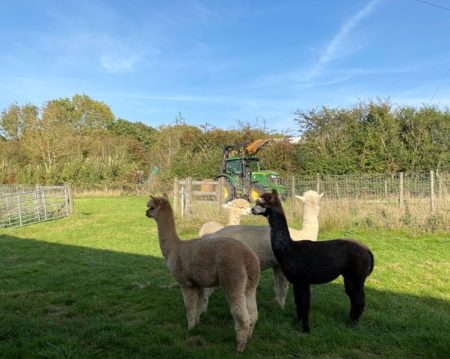Longer grass at Kensmyth alpacas in the Cotswolds, Clay Meadow
I am often asked why we keep the grass longer at Clay Meadow for our alpacas whereas folk have seen shorter grass elsewhere. Well, there are a number of reasons for this and you can look at the pros and cons for yourself.
Worm burden – always be aware that the larvae for worms is always at the tip of the grass to be ingested but if the grass is left longer, whilst the grass itself is less sweet/tasty, the larvae die if left on long grass.
We do not overgraze our paddocks so we never have short grass in any paddock at all.
When in the drier months when the weather gets unusually hot and dries the ground out, the moisture is retained if the grass is left a little longer. At this point we would strip top approximately half a field at a time which ensures that the grass left moist stays that way even if the shorter grass dries out – we cannot rely on the UK weather anymore.
As you hit Autumn/Winter, then you have to make a judgement call as to when you last top your fields. Wet weather will then prevent (or should) you going onto the grass as it will churn it up to mud.


There are always reasons a tractor has to go onto the field, hedge cutting is one of them which must be done between September and the end of February so again a judgement call is required as to when this is done, alongside availability of contractors if not doing it yourself.
Longer grass is stopped from being churned up when we have days or weeks of rain as the alpaca should always live out albeit spend time in their shelters – they should always have shelters with dry floors to let their pads dry out.
I cannot deny that the fleece on the legs of the alpaca get wet by walking through longer grass but provided you always give them a shelter in which to dry out their feet and keep the rain off their back, it has worked for us from 2007 and “if it ain’t broke, why fix it”.